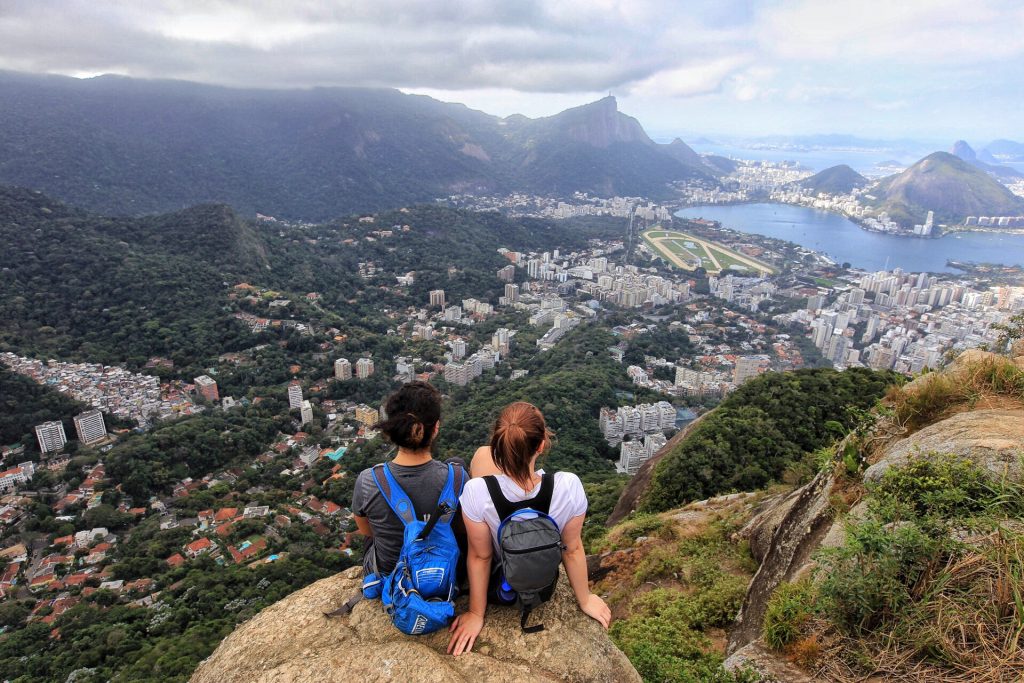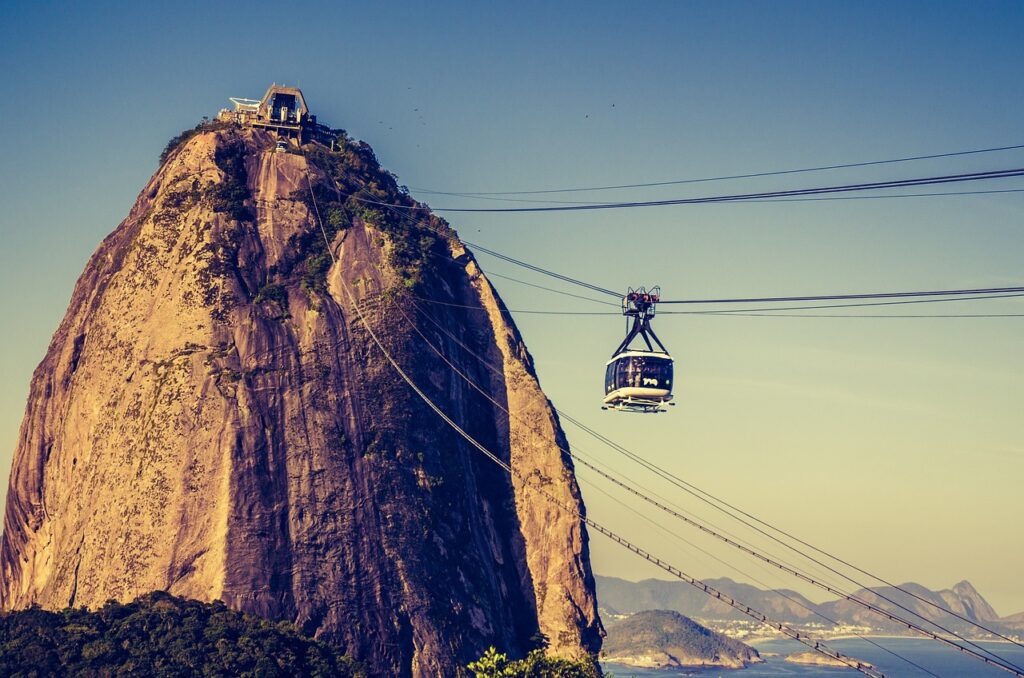Embark on a journey of discovery through the diverse and awe-inspiring landscapes of Brazil, a country that beckons adventure seekers with its vast array of hiking trails. From the mystical table-top mountains of Monte Roraima to the cascading waterfalls of Chapada Diamantina, Brazil’s hiking destinations offer a kaleidoscope of natural wonders waiting to be explored. In this guide, we unveil some of the best hiking spots across the country, each promising a unique blend of challenge and reward. Whether you seek panoramic views from towering peaks, immersive treks through dense rainforests, or coastal trails leading to secluded paradises, Brazil invites you to lace up your boots and embrace the beauty of its diverse terrains. Join us as we traverse the trails less traveled and uncover the enchanting landscapes that make Brazil a hiking enthusiast’s dream destination.
Brazil offers diverse and breathtaking landscapes that are perfect for hiking enthusiasts. Whether you’re interested in coastal trails, mountainous terrains, or lush rainforests, there are numerous options. Here are some of the best places to go hiking in Brazil:
Chapada Diamantina – Bahia:
Known for its dramatic landscapes, waterfalls, and caves, Chapada Diamantina National Park offers a variety of trails, including the challenging trek to Pico do Barbado, the highest peak in northeastern Brazil.
Serra dos Órgãos National Park – Rio de Janeiro:
Pedra do Dedo: This iconic peak is known for its distinctive shape, which resembles a human finger. The summit offers stunning views of the surrounding mountains and valleys.
Pedra do Agulha: This slender peak is another popular hiking destination. The summit offers panoramic views of the park and the city of Teresópolis.
Pedra do Sino: This peak is the highest in the park, with an elevation of 2,263 meters. The summit offers stunning views of the Atlantic Ocean and the Serra do Mar mountains.
Pico da Bandeira – Espírito Santo/Minas Gerais:
Pico da Bandeira reigns as the highest point in the state of Espírito Santo, as well as Minas Gerais, and even the entire Southeast region of Brazil. It’s also the third highest peak in the entire country, proudly standing at 2,891.32 meters above sea level.
This magnificent peak is nestled within the Caparaó National Park, a protected area embraced by the Caparaó mountain range, where the borders of Espírito Santo and Minas Gerais meet. The park is a haven for diverse ecosystems, boasting lush forests, soaring mountains, gushing rivers, and cascading waterfalls.
Reaching Pico da Bandeira is a moderate challenge for most hikers, with the trail typically taking between 6 to 8 hours to complete. But the journey is undeniably rewarding, offering breathtaking views of the surrounding landscapes that stretch out like an endless canvas.
Pico da Bandeira has become a magnet for nature enthusiasts and mountaineering aficionados. It’s a place where you can truly connect with the raw beauty of nature and witness the grandeur of Brazil from a breathtaking perspective.
So, if you’re seeking an unforgettable adventure and a chance to conquer new heights, Pico da Bandeira awaits with its open arms and breathtaking vistas. Are you ready to take on the challenge?
Itatiaia National Park – Rio de Janeiro/Minas Gerais:
Brazil’s oldest national park, Itatiaia, is home to diverse ecosystems, waterfalls, and the challenging Agulhas Negras trail.
Itatiaia National Park is a national park located in the Serra da Mantiqueira mountain range, on the border between the states of Rio de Janeiro and Minas Gerais, Brazil. It is the oldest national park in Brazil, established in 1937.
The park is home to a variety of landscapes, including mountains, forests, waterfalls, and rivers. The highest point in the park is the Agulhas Negras, which is 2,791 meters (9,154 feet) tall.
Itatiaia National Park is a popular destination for hiking, camping, and fishing. There are a variety of trails in the park that range in difficulty from easy to challenging. The park is also home to a number of campsites and fishing spots.
Some of the most popular attractions in Itatiaia National Park include:
- Agulhas Negras: This peak is the highest in the park and offers stunning views of the surrounding area.
- Cachoeira Véu da Noiva: This waterfall is 84 meters (276 feet) tall and is one of the most popular attractions in the park.
- Mirante do Último Adeus: This viewpoint offers panoramic views of the park and the surrounding mountains.
Itatiaia National Park is a beautiful and diverse place that offers something for everyone. It is a great place to escape the hustle and bustle of everyday life and connect with nature.
Lençóis Maranhenses National Park – Maranhão:
While not traditional hiking, exploring the shifting sand dunes and lagoons of Lençóis Maranhenses is a unique and otherworldly experience.
Lençóis Maranhenses National Park is a national park located in the state of Maranhão, Brazil. It is known for its vast landscape of white sand dunes and blue lagoons. The park is a popular destination for hiking, swimming, and camping.
The park is located on the eastern coast of Maranhão, bordering the Atlantic Ocean. It is a large area, covering over 1,500 square kilometers (580 square miles). The park is home to a variety of ecosystems, including sand dunes, lagoons, mangroves, and forests.
The dunes in the park are some of the largest in the world. They can reach heights of up to 40 meters (130 feet). The lagoons in the park are formed by rainwater that collects in the depressions between the dunes. The lagoons are clear and blue, and they are a popular spot for swimming and sunbathing.
The park is home to a variety of wildlife, including birds, reptiles, and mammals. The park is a popular destination for birdwatching, and it is home to over 200 species of birds. The park is also home to a variety of reptiles, including snakes, lizards, and turtles. The park is also home to a variety of mammals, including monkeys, deer, and armadillos.
The park is a popular destination for hiking. There are a variety of trails in the park that range in difficulty from easy to challenging. The park is also a popular destination for camping. There are a number of campsites in the park that offer basic facilities.
The best time to visit the Lençóis Maranhenses National Park is during the rainy season, which runs from January to June. During the rainy season, the lagoons are full and the landscape is lush and green.
Pedra Azul State Park – Espírito Santo:
The park features trails leading to the iconic Pedra Azul, a massive quartzite rock formation surrounded by lush Atlantic Forest. Pedra Azul State Park is a state park located in the municipality of Domingos Martins, in the state of Espírito Santo, Brazil. It was created in 1991 to protect the natural heritage of the region, and in particular the Pedra Azul (Blue Stone), a granite rock that is one of the most iconic landmarks in the state.
The park covers an area of 1,240 hectares (3,060 acres) and is home to a variety of ecosystems, including forests, mountains, and waterfalls. The Pedra Azul is the highest point in the park, at an elevation of 1,822 meters (5,978 feet). The rock is composed of granite and has a distinctive blue hue that is caused by the presence of mica.
The park is a popular destination for hiking, camping, and rock climbing. There are a variety of trails in the park that range in difficulty from easy to challenging. The park is also home to a number of campsites and climbing spots.
Some of the most popular attractions in Pedra Azul State Park include:
- Pedra Azul: This iconic rock is the main attraction of the park and offers stunning views of the surrounding area.
- Piscinas Naturais do Tabuleiro: These natural pools are located at the base of the Pedra Azul and are a popular spot for swimming and sunbathing.
- Cachoeira do Canion: This waterfall is located in a deep canyon and is a popular spot for hiking and rock climbing.
Pedra Azul State Park is a beautiful and diverse place that offers something for everyone. It is a great place to escape the hustle and bustle of everyday life and connect with nature.
Monte Roraima – Roraima:
A massive tepui (tabletop mountain) shared with Venezuela and Guyana, Monte Roraima offers a challenging multi-day trek with unique landscapes. Mount Roraima: A Tabletop Titan in South America, Rising majestically in the northeastern corner of South America, Mount Roraima reigns supreme as a tepui, a distinctive flat-topped mountain. Straddling the borders of Brazil, Venezuela, and Guyana, it stands as the highest peak in Venezuela, piercing the sky at a staggering 2,810 meters (9,222 feet).
This geological wonder has captivated the imagination for centuries, drawing adventurous souls from all corners of the globe. The trek to its summit, though challenging, is a journey of epic proportions, typically spanning 6 to 8 days. Every step rewards you with breathtaking vistas of the surrounding landscape, unfolding like a breathtaking tapestry beneath your feet.
Lush vegetation cloaks Mount Roraima, ranging from dense forests to open fields and even swampy bogs. This unique ecosystem shelters a diverse array of creatures, from vibrant birds and elusive mammals to fascinating reptiles.
More than just a physical entity, Mount Roraima holds deep cultural significance for many indigenous tribes in the region. They revere it as a sacred space, a place woven into their traditions and stories.
And for the world at large, Mount Roraima has achieved iconic status. Arthur Conan Doyle’s timeless novel, “The Lost World,” drew inspiration from its rugged beauty, capturing the imagination of readers and fueling the desire to explore this remarkable place.
Visiting Mount Roraima is an unforgettable experience. It’s a chance to step into a world apart, a place where nature reigns supreme and the spirit of adventure takes flight. So, pack your boots, fuel your wanderlust, and prepare to be awestruck by the power and grandeur of this legendary tepui.
Here are some interesting facts about Mount Roraima:
- It’s one of the most famous tepuis in the world.
- Indigenous tribes consider it a sacred site.
- Arthur Conan Doyle’s “The Lost World” was inspired by it.
Mount Roraima is more than just a mountain; it’s a symbol of resilience, beauty, and the enduring power of nature. It’s a call to adventure, beckoning us to explore the world and discover its hidden treasures.
Fernando de Noronha – Pernambuco:
While known for its stunning beaches and marine life, Fernando de Noronha also offers scenic trails, such as the challenging trek to the top of Morro do Pico.
Fernando de Noronha: A Volcanic Paradise off Brazil’s Coast. Just 350 kilometers off the northeastern coast of Brazil, Fernando de Noronha rises from the ocean like a volcanic jewel. This archipelago of 21 islands, islets, and rocky outcrops is a magnet for travelers seeking pristine beaches, crystal-clear waters, and a vibrant tapestry of life.
The main island, also called Fernando de Noronha, boasts a diverse landscape sculpted by ancient volcanic forces. Lush rainforests cling to dramatic cliffs, secluded coves nestle amidst towering rock formations, and white-sand beaches stretch out like ribbons against the turquoise sea.
But it’s the beaches that truly steal the show. Praia do Sancho, often hailed as one of the world’s finest, enchants with its calm waters, vibrant coral reefs, and natural pools perfect for basking in the sun. For thrill seekers, Praia do Leão beckons with its energetic waves, ideal for surfing and bodyboarding. And for those seeking tranquility, Praia da Conceição offers a haven of gentle waters and golden sands.
Beyond the beaches, Fernando de Noronha is a haven for marine life. Glide alongside graceful sea turtles, witness playful dolphins frolicking in the waves, or spot majestic sharks cruising through the depths. Colorful fish dance in coral gardens, and diverse birdlife soars through the skies, adding to the symphony of nature.
Visiting Fernando de Noronha is an experience that transcends the ordinary. It’s a place where pristine beauty meets vibrant life, where the rhythm of the ocean sets the pace, and where adventure and relaxation find perfect harmony. So, pack your swimsuit, your sense of wonder, and prepare to be swept away by the magic of this volcanic paradise.
Here are some additional reasons why Fernando de Noronha is a must-visit:
- Limited visitor access: The island protects its ecosystem by limiting the number of visitors, ensuring a pristine and peaceful experience.
- Unique wildlife: Witness rare seabird colonies, spot endemic iguanas, and come face-to-face with majestic whales during their migration season.
- Thriving underwater world: Scuba dive or snorkel amidst vibrant coral reefs teeming with colorful marine life, or explore hidden caves and shipwrecks.
- Active adventures: Hike through lush rainforests, kayak along secluded coves, or try your hand at stand-up paddleboarding or windsurfing.
Fernando de Noronha is more than just a destination; it’s an experience that will leave you breathless and forever changed. So, embark on your own volcanic adventure and discover why this island paradise is truly one of a kind.
Pantanal:
While primarily known for its wetlands, the Pantanal also offers hiking opportunities, especially in the surrounding upland areas with diverse flora and fauna. Pantanal: Where Wild Beauty Meets Wetland Wonders.
Ah, the Pantanal. Imagine a vast canvas painted in shades of emerald, ochre, and cerulean. A land where prehistoric giants roam free, where jaguars stalk through swaying grasses, and where caimans bask on sun-drenched logs. This is the Pantanal, the world’s largest freshwater wetland, a breathtaking tapestry woven by nature’s hand.
Welcome to a land where the dry season paints the landscape in a golden hue, transforming the vast expanse into a sea of swaying grasses punctuated by lagoons and shimmering oxbow lakes. But come the rains, and the Pantanal undergoes a dramatic transformation. The waters rise, engulfing the plains and turning the land into a shimmering mosaic of wetlands, rivers, and lakes.
This dynamic ecosystem teems with life. Jaguars, the apex predators of the Pantanal, stalk their prey with stealth and grace, their powerful presence a constant reminder of the wild’s untamed spirit. Capybaras, the world’s largest rodents, graze peacefully alongside herds of antelopes, their clumsy charm adding a touch of whimsy to the scene.
But the Pantanal’s magic lies not just in its majestic creatures. It’s in the symphony of birdsong that fills the air at dawn, in the flutter of iridescent butterflies against a backdrop of wildflowers, and in the silent ballet of caimans gliding through the water.
For the adventurous soul, the Pantanal offers a playground of possibilities. Trek through lush forests, navigate the waterways by boat, or saddle up for a horseback ride across the plains, the wind whipping through your hair as the sun dips below the horizon.
For the nature lover, the Pantanal is a sanctuary. Seek solace in the whispering reeds, watch as the sun paints the sky in fiery hues, and let the rhythm of the wild lull you into a state of peaceful contemplation.
The Pantanal is more than just a place; it’s an experience. It’s a chance to reconnect with nature, to witness the power and beauty of the wild, and to discover a world where time seems to stand still. So, come, lose yourself in the wonders of the Pantanal, and let this wetland paradise weave its magic around you.
Here are some additional reasons to visit the Pantanal:
- Unique biodiversity: Home to over 4,000 plant species and 1,000 animal species, including endangered species like the giant anteater and the jaguar.
- Rich cultural heritage: Immerse yourself in the traditions of the Pantaneiros, the local people who have lived in harmony with the land for generations.
- Sustainable tourism: Many eco-friendly lodges and tours are available, ensuring your visit benefits the environment and local communities.
- A year-round destination: Each season offers a unique experience, from the wildlife-rich wet season to the dramatic dry season landscapes.
The Pantanal awaits. Are you ready to answer its call?
Before embarking on any hiking adventure, it’s essential to check trail conditions, obtain necessary permits, and be prepared with proper gear. Additionally, some trails may require the assistance of experienced guides, especially in remote or challenging terrains.
As we conclude this exploration of Brazil’s most captivating hiking destinations, we hope this guide has ignited your passion for adventure and inspired your next expedition. From the rugged peaks to the serene coastal paths, Brazil’s trails offer not just physical challenges but a deep immersion into the country’s rich biodiversity and breathtaking scenery. Whether you choose to conquer summits, wander through rainforests, or trek along pristine coastlines, each step unveils a new facet of Brazil’s natural wonders. So, pack your backpack, embrace the call of the trails, and let the landscapes of Brazil etch unforgettable memories in your heart. Obrigado, Brazil, for being a playground of exploration and a haven for those who seek the extraordinary in nature’s embrace. Until the next adventure awaits.



